Aesom 40 40 mg capsules 14s
$21.40
Out of stock
Description
The instruction for medical use of medicine ЭСОМ® 20 ЭСОМ® 40 the Trade name ЭСОМ® 20 ЭСОМ® 40 International unlicensed name Esomeprazole Dosage Form of the Capsule kishechnorastvorimy 20 mg and 40 mg Structure One capsule contains active agent – dihydrate magnesium esomeprazole micropellets * 101.70 mg or 203.40 mg (it is equivalent to esomeprazole of 20 mg or 40 mg respectively) structure of a lid of the capsule: the titan dioxide (E 171), ferrous oxide red (E 172), the water purified, gelatin. structure of the body of the capsule: the titan dioxide (E171), ferrous oxide red (E172) (for ЭСОМ® 40), the water purified, gelatin. * structure of micropellets: active agent – dihydrate magnesium esomeprazole – 21.700 mg or 43.400 mg excipients: neutral pellets, hydroxypropyl-methyl cellulose 2910 (Gipromelloza), hydroxypropyl cellulose-SL (HPC-SL), magnesium stearate, L 30 D 55 dispersion (30%), triethyl citrate, a simetikona an emulsion of 30%, talc, the water purified the Description of Capsule No. 4 with the white body and a lid of red-brown color eudragit. Capsule contents – pellets from white till cream color (for a dosage of 20 mg). Capsules No. 3 with the body and a lid of red-brown color. Capsule contents – pellets from white till cream color (for a dosage of 40 mg). Pharmacotherapeutic group Antiulcerous drugs and drugs for treatment of a gastroesophageal reflux (GORD). Inhibitors of the protonew pump. Esomeprazole. The ATX A02BC05 code the Pharmacological Pharmacokinetics Esomeprazole properties is unstable in acidic environment and is accepted orally in the form of the granules covered with a kishechnorastvorimy cover. Drug is quickly absorbed: the maximum concentration in plasma is reached in 1-2 hours after reception. The absolute bioavailability of esomeprazole after single dose of a dose of 40 mg is 64% and increases up to 89% against the background of daily reception once a day. For a dose of 20 mg of esomeprazole these rates are 50% and 68%, respectively. Distribution volume at equilibrium concentration at healthy people is about 0.22 l/kg of body weight. Esomeprazole contacts proteins of plasma for 97%. Meal slows down and reduces absorption of esomeprazole in a stomach, however it has no significant effect on efficiency of inhibition of secretion of hydrochloric acid. Esomeprazole is exposed to metabolism with participation of a system of P450 cytochrome (CYP). The main part is metabolized with the participation of specific polymorphic CYP2C19 isoform, at the same time hydroxies – and demetilirovanny metabolites of esomeprazole are formed. Metabolism of the rest is carried out by other specific CYP3A4 isoform, at the same time is formed sulfoderivative esomeprazole, being the main metabolite defined in plasma. The parameters specified below reflect, generally the nature of pharmacokinetics at patients with active CYP2C19 enzyme (patients with active metabolism). The general clearance is about 17 l/h after single dose of drug and 9 l/h – after multiple dose. Elimination half-life makes 1.3 hours at systematic reception once a day. The area under a curve concentration time (AUC) increases at repeated intake of esomeprazole. Dose-dependent increase in AUC at repeated intake of esomeprazole has nonlinear character that is a consequence of decrease in metabolism at the first passing through a liver and also decrease in system clearance probably of CYP2C19 enzyme caused by inhibition esomeprazole and/or its sulfocontaining metabolite. At daily reception once a day esomeprazole is completely removed from blood plasma in a break between receptions and does not kumulirut. The main metabolites of esomeprazole do not influence secretion of gastric acid. At oral administration up to 80% of a dose it is removed in the form of metabolites with urine, other quantity is removed with excrements. In urine less than 1% of not changed esomeprazole are found. Features of pharmacokinetics in some groups of patients: Approximately at 2.9±1.5% of the population the activity of an isoenzyme of CYP2C19 is reduced. Such patients have an esomeprazole metabolism, is generally carried out as a result of action of CYP3A4. At systematic reception of 40 mg of esomeprazole once in day the average AUC value for 100% exceeds value of this parameter at patients with superactivity of an isoenzyme of CYP2C19. Average values of the maximum concentration in plasma at patients with reduced activity of an isoenzyme are increased approximately by 60%. The specified features do not influence a dose and a route of administration of esomeprazole. At patients of advanced age (71-80 years) the metabolism of esomeprazole does not undergo significant changes. After single dose of 40 mg of esomeprazole the average AUC value at women for 30% exceeds that at men. At daily administration of drug once a day differences in pharmacokinetics at men and women are not noted. The specified features do not influence a dose and a route of administration of esomeprazole. At patients with a slight and moderate liver failure the metabolism of esomeprazole can be broken. At patients with a heavy liver failure the speed of metabolism is reduced that leads to increase in AUC value for esomeprazole twice. Studying pharmacokinetics at patients with a renal failure was not carried out. As through kidneys the removal not of the esomeprazole, but its metabolites is carried out, it is possible to believe that metabolism of esomeprazole at patients with a renal failure does not change. Children at the age of 12-18 years after repeated reception have 20 mg and 40 mg of esomeprazole the AUC value and time of achievement of the maximum concentration (tmax) in blood plasma was similar to AUC and tmax values at adults. The pharmacodynamics of Esom® reduces secretion of acid in a stomach by specific inhibition of the proton pump in covering cells, is omeprazolum S-isomer. S- and R-isomers of omeprazolum have similar pharmakodinamichesky activity. The mechanism of action Esom® is the weak basis, collects in secretory tubules of covering cells in acidic environment where it is activated and inhibits the proton pump – H+,K enzyme +-ATFazu. Esomeprazole inhibits both basal, and stimulated secretion of acid. Effect of esomeprazole develops within 1 hour after oral administration of 20 mg or 40 mg. At daily administration of drug within 5 days in a dose of 20 mg once a day average maximum concentration of acid after stimulation by Pentagastrinum decreases by 90% (at measurement of concentration of acid in 6-7 hours after administration of drug for the 5th day of therapy). At patients with the gastroesophageal reflux disease (GRD) and existence of clinical symptoms in 5 days of daily oral administration of esomeprazole in a dose of 20 mg or 40 mg the value intragastric rn higher than 4 was maintained within, on average, 13 and 17 hours from 24 hours. Against the background of intake of esomeprazole in a dose of 20 mg a day the value intragastric rn higher than 4 was maintained not less than 8, 12 and 16 hours at 76%, 54% and 24% of patients, respectively. For 40 mg of esomeprazole this ratio makes 97%, 92% and 56%, respectively. The therapeutic effect reached inhibition of secretion of acid At intake of esomeprazole in a dose of 40 mg healing a reflux esophagitis is caused approximately at 78% of patients in 4 weeks of therapy and at 93% – in 8 weeks of therapy. Treatment by esomeprazole in a dose of 20 mg 2 times a day in a combination with the corresponding antibiotics within one week leads to a successful eradikation of Helicobacter pylori approximately at 90% of patients. Patients with an uncomplicated peptic ulcer after a week eradikatsionny course do not need the subsequent monotherapy by anti-secretory drugs for healing of an ulcer and elimination of symptoms. Indications – a gastroesophageal reflux disease: an erosive reflux esophagitis, the long-term supporting treatment after healing erosive a reflux – an esophagitis for prevention of a recurrence, symptomatic treatment of a gastroesophageal reflux disease – Helicobacter pylori eradikation as a part of the combined antibacterial therapy in a peptic ulcer of a stomach and the duodenum associated with Helicobacter pylori – long kislotopodavlyayushchy therapy at the patients who had bleeding from a round ulcer (after intravenous use of the drugs lowering secretion of glands of a stomach for prevention of a recurrence) – the gastropathies connected with long intake of non-steroidal anti-inflammatory drugs – Zollingera-Ellison’s syndrome or other states which are characterized by pathological hypersecretion including, and idiopathic hypersecretion – prevention of the stomach ulcer and a duodenum tied with intake of non-steroidal anti-inflammatory drugs at the patients belonging to the Route of administration risk group and doses Inside. Capsules should be swallowed entirely, washing down with a small amount of water. Capsules cannot be chewed or split up. For patients with difficulty when swallowing, capsules can be opened and to dissolve pellets in half of glass of still water. It is not necessary to use other liquids as the protective cover can be dissolved. Water with microgranules is drunk at once or within 30 minutes. Again fill a glass with water half, stir the remains and drink. It is not necessary to chew or split up microgranules. Patients who cannot swallow capsules can open and dissolve pellets in still water, then to enter via the probe. It is important that the expediency of administration of drug by means of the syringe and a tube, was carefully considered. Adults and children since 12 years the Gastroesophageal reflux disease On 40 mg once a day within 4 weeks. The additional 4-week course of treatment in cases when after the first course the healing of an esophagitis does not occur is recommended or symptoms remain. The long-term supporting treatment after healing erosive a reflux esophagitis for prevention of a recurrence On 20 mg once a day. Symptomatic treatment of a gastroesophageal reflux disease of 20 mg once a day – to patients without esophagitis. If after 4 weeks of treatment the symptoms do not disappear, it is necessary to perform additional examination of the patient. After elimination of symptoms of a disease it is possible to switch over to the mode of administration of drug on demand, i.e. to accept Esom® on 20 mg once a day when resuming symptoms. For the patients accepting NPVP and belonging to risk group of development of stomach ulcer or a duodenum it is not recommended to prolong treatment in the mode on demand. Adults as a part of combination therapy for an eradikation with Helicobacter pylori treatment of an ulcer of the duodenum associated with Helicobacter pylori: Эсом® 20 mg, amoxicillin of 1 g and klaritromitsin 500 mg. All drugs are taken 2 times a day within 7 days. Long kislotopodavlyayushchy therapy at the patients who had bleeding from a round ulcer (after intravenous use of the drugs lowering secretion of glands of a stomach for prevention of a recurrence) Эсом® 40 mg of 1 times a day within 4 weeks after the end of intravenous therapy by the drugs lowering secretion of glands of a stomach. Patients, Treatment of the stomach ulcer connected with reception of NPVS is long the accepting NPVS: Эсом® 20 mg or 40 mg once a day. Duration of treatment is 4-8 weeks. Prevention of the stomach ulcer and a duodenum tied with reception of NPVS Эсом® 20 of mg or 40 mg once a day. The states connected with pathological hypersecretion, including, Zollingera-Ellison’s syndrome and idiopathic hypersecretion the Recommended initial dose – Эсом® 40 mg two times a day. Further the dose is selected individually, duration of treatment is defined by a clinical picture of a disease. There is an experience of use of drug in doses up to 120 mg 2 times a day. To children 12 years are younger it is not necessary to appoint Esom® due to the lack of data on safety. Administration of drug via the nazogastralny probe in the presence of the installed nazogastralny probe, is recommended to open the drug Esom® capsule, to pour out intact granules in the 60-millilitre syringe and to mix from 50 ml of water. Then, it is necessary to insert the piston of the syringe and by stirring to mix contents within 15 seconds. It is necessary to hold the syringe a tip up, it is obligatory to check a syringe tip regarding contamination by medicine granules. After full dissolution of granules in the syringe to empty the syringe in the nazogastralny probe, having provided delivery of medicine to a stomach. After introduction of granules, it is necessary to wash out the nazogastralny probe a small additional amount of water. Mix has to be used immediately right after preparation. Side effects Often (& gt, 1/100, & lt, 1/10) – a headache – an abdominal pain, diarrhea, a meteorism, nausea, vomiting, a constipation Infrequently (& gt, 1/1000, & lt, 1/100) – dermatitis, an itching, urticaria, rash – dizziness – dryness in a mouth – insomnia, paresthesia, drowsiness – increase in activity of hepatic enzymes – peripheral hypostases – illegibility of sight is rare (& gt, 1/10000, & lt, 1/1000) – a leukopenia, thrombocytopenia – allergic reactions: fever, a Quincke’s disease, anaphylactoid reaction / shock – excitement, a depression, an indisposition, confusion – disturbance of taste – a hyponatremia – a bronchospasm – stomatitis and gastrointestinal candidiasis – hepatitis with (or without) jaundice – a photosensitization, an alopecia – arthralgias, myalgias, risk of developing spinal fractures, necks of a hip, a wrist – perspiration Very seldom (& lt, 1/10000) – an agranulocytosis, a pancytopenia – hallucinations (mainly at the weakened patients), – a liver failure, hepatic encephalopathy – a multiformny exudative erythema – Stephens-Johnson’s syndrome – a toxic epidermal necrolysis – muscle weakness – interstitial nephrite – a gynecomastia – a hypomagnesiemia, a heavy hypomagnesiemia can lead agressive behavior to a hypocalcemia – microscopic colitis Was reported about separate cases of an irreversible disorder of vision at reception of high doses at patients in critical condition, relationship of cause and effect is not established with administration of drug. Contraindications – hypersensitivity to esomeprazole, the substituted benzimidazoles or other ingredients which are a part of drug – a concomitant use with atazanaviry, nelfinaviry – children’s age up to 12 years in GERD – children’s and teenage age up to 18 years according to other indications, except a gastroesophageal reflux disease With care – the heavy renal failure Medicinal interactions by esomeprazole and other inhibitors of a proton pomp can lead Suppression of acidity of gastric juice against the background of treatment to change of absorption of drugs which absorption depends on acidity of the environment. Esomeprazole, as well as other drugs reducing secretion of acid in a stomach can lead to decrease in absorption of a ketokonazol, itrakonazol and erlotinib. At the same time at joint intake of esomeprazole with digoxin, concentration of the last can increase. At joint reception of IPP and methotrexate, increase in concentration at some patients is noted. At use of a methotrexate in high doses it is necessary to suspend intake of esomeprazole. In cases when atazanavir and nelfinavir were accepted along with omeprazolum, lowering of the level of these drugs in serum therefore their combined use it is necessary to avoid was noted. Joint prescribing of omeprazolum in a dose of 40 mg in once day and an atazanavira of 300 mg / ritonavira led 100 mg to significant decrease in AUC values and also maximum and minimum concentration of an atazanavir. Increase in a dose of an atazanavir up to 400 mg did not compensate influence of omeprazolum on concentration of an atazanavir. Therefore it is not necessary to appoint esomeprazole together with atazanaviry, and co-administration of esomeprazole and a nelfinavir is excluded. Esomeprazole inhibits CYP2C19 – the main enzyme participating in his metabolism. Respectively, combined use of esomeprazole with other drugs in which metabolism CYP2C19, such as diazepam, to tsitalopra, Imipraminum, klomipramin, Phenytoinum, etc. takes part can lead to increase in concentration of these drugs in plasma that, in turn, can demand a dose decline. It is especially important to remember this interaction when assigning a prep
of the Esom® at in the mode on demand. At joint reception of 30 mg of esomeprazole and diazepam which is CYP2C19 cytochrome substrate, decrease in clearance of diazepam by 45% is noted. Prescribing of esomeprazole in a dose of 40 mg led to increase in residual concentration of Phenytoinum at patients with epilepsy for 13%. In this regard it is recommended to control concentration of Phenytoinum in plasma in an initiation of treatment esomeprazole and at its cancellation. Esomeprazole (40 mg a day) concentration – time’ a vorikonazol (CYP2C19 substrate) increases the maximum concentration and the area of a curve by 15% and 41% respectively ‘. Joint intake of warfarin from 40 mg of esomeprazole does not lead to change of time of coagulation at patients, is long accepting warfarin. However it was reported about several cases of clinically significant increase in the INR (the international normalized relation) index at combined use of warfarin and esomeprazole. Therefore at the beginning and upon termination of combined use of these drugs it is recommended to control MNO. Joint reception of a tsizaprid from 40 mg of esomeprazole leads to increase in values of pharmacokinetic parameters of a tsizaprid at healthy volunteers: AUC – for 32% and elimination half-life for 31%, however the maximum concentration of a tsizaprid in plasma at the same time considerably does not change. Insignificant lengthening of an interval of QT which was observed at monotherapy tsizapridy at addition of esomeprazole did not increase. Esomeprazole does not cause clinically significant changes of pharmacokinetics of amoxicillin and quinidine. Joint appointment with esomeprazole led to increase in concentration of a takrolimus in serum. Esomeprazole does not cause clinically significant changes of pharmacokinetics of amoxicillin, quinidine. Combined use of esomeprazole and Naproxenum or a rofekoksib did not reveal clinically significant pharmacokinetic interaction. CYP2C19 and CYP3A4 take part in metabolism of esomeprazole. Combined use of esomeprazole with CYP3A4 inhibitor, klaritromitsiny (500 mg twice a day) leads to double increase in AUC value in relation to esomeprazole. Combined use of esomeprazole and the combined CYP3A4 and CYP3A4 inhibitor can lead to double increase in concentration of esomeprazole. Combined use of esomeprazole and the combined CYP3A4 and CYP2C19 inhibitor of a vorikonazol increases AUC values for omeprazolum by 280%. As a rule, in such cases the esomeprazole dose adjustment is not required. However, dose adjustment of esomeprazole should be carried out at patients with a heavy abnormal liver function and at its prolonged use. It is necessary to avoid combined use of esomeprazole and klopidogrelya. Special instructions in the presence of any disturbing symptoms (for example, such as considerable spontaneous loss of body weight, repeated vomiting, a dysphagy, vomiting with impurity of blood or a melena) and also in the presence of stomach ulcer (or at suspicion of stomach ulcer) it is necessary to exclude existence of a malignant new growth as the Esom® drug treatment can lead to smoothing of symptomatology and delay diagnosis. The patients taking the drug during the long period (especially over a year) have to be under regular observation of the doctor. The patients accepting Esom® in the therapy mode on demand have to be instructed about need to contact the doctor at change of nature of symptoms. In view of fluctuations of concentration of esomeprazole in plasma when assigning therapy on demand, it is necessary to consider interaction of drug with other medicines. When prescribing the drug Esom® for an eradikation of Helicobacter pylori the possibility of medicinal interactions for all components of triple therapy has to be considered. Klaritromitsin is powerful CYP3A4 inhibitor therefore when assigning eradikatsionny therapy the patients receiving other drugs which are metabolized with participation of CYP3A4 (for example, a tsisaprida) need to consider possible contraindications and interactions of a klaritromitsin with these medicines. Treatment by inhibitors of a proton pomp can lead to insignificant increase in risk of developing of the gastrointestinal infections caused by Salmonella and Campylobacter. At the patients taking the anti-secretory drugs during a long period the formation of ferruterous cysts in a stomach is more often noted. These phenomena are caused by physiological changes in result of the expressed inhibition of secretion of acid. Cysts benign also have reversible character. During the conducted comparative researches with ranitidine esomeprazole showed the best efficiency concerning healing of stomach ulcers at the patients receiving non-steroidal anti-inflammatory drugs (NPVP) including selection inhibitors tsikloksigenazy-2 (TsOG-2). Renal failure: dose adjustment of drug is not required. Experience of use of esomeprazole for patients with a heavy renal failure is limited, in this regard, when prescribing drug it patients should be careful. Liver failure: in a slight and moderate liver failure the dose adjustment of drug is not required. For patients with a heavy liver failure it is not necessary to exceed the maximum daily dose – 20 mg. Patients of advanced age: dose adjustment of drug is not required. Pregnancy and the period of a lactation Clinical data on influence of esomeprazole at pregnancy are insufficient. It is necessary to appoint drug pregnant only when the expected advantage for mother exceeds possible risk for a fruit. It is unknown whether esomeprazole with breast milk is emitted therefore it is not necessary to appoint Esom® during feeding a breast. Features of influence of medicine on ability to run the vehicle or potentially dangerous mechanisms Considering side effects of medicine, it is necessary to be careful when driving or potentially dangerous mechanisms. Overdose Symptoms: strengthenings of symptoms of side effects Treatment: symptomatic. Specific antidotes are unknown. Esomeprazole contacts proteins of plasma therefore dialysis is ineffective. The form of release and packing On 7 or 10 capsules place in blister strip packaging from a formatura of aluminum and printing aluminum foil. On 1, 2, 4 (on 7 capsules) or 1, 3 (on 10 capsules) blister strip packagings together with the instruction for medical use in the state and Russian languages place in a pack cardboard with the hologram of firm – producer. To Store storage conditions at a temperature not over 25 of 0C, in the dry, protected from light place. To store out of children’s reach! A period of storage 2 years Prescription status According to the prescription the Producer/packer of JSC Nobel Almatinskaya Pharmatsevticheskaya Fabrika Republic of Kazakhstan, Almaty, Shevchenko St., 162 E the Owner of the registration certificate of JSC Nobel Almatinskaya Pharmatsevticheskaya Fabrika Republic of Kazakhstan, Almaty, Shevchenko St., 162 E the Address of the organization accepting in the territory of the Republic of Kazakhstan claims from consumers on quality of products (goods): JSC Nobel Almatinskaya Pharmatsevticheskaya Fabrika Republic of Kazakhstan, Almaty, Shevchenko St., 162 E.
To develop
Additional information
| Ingredient |
|---|





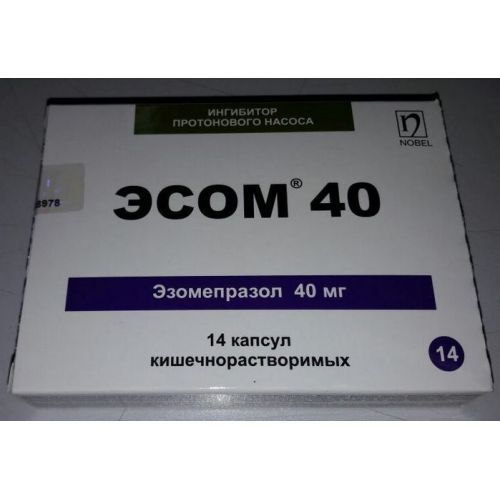
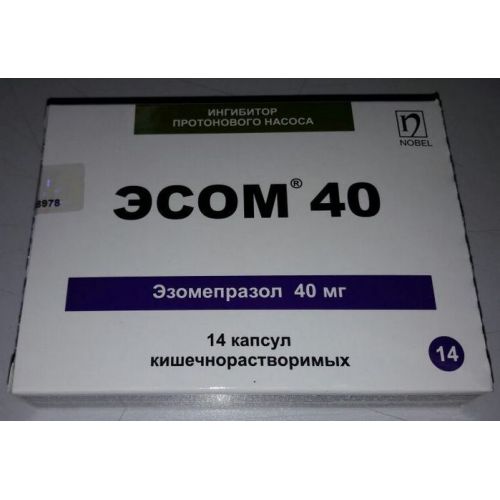
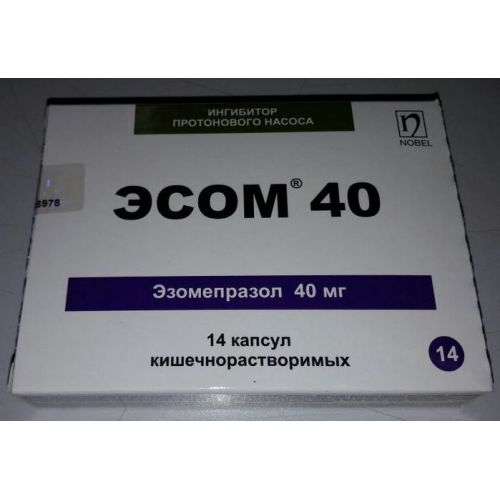
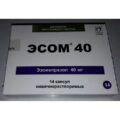
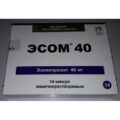
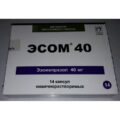
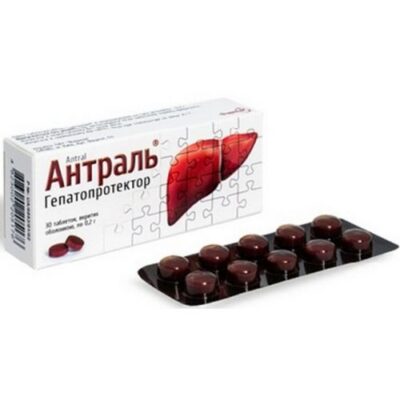
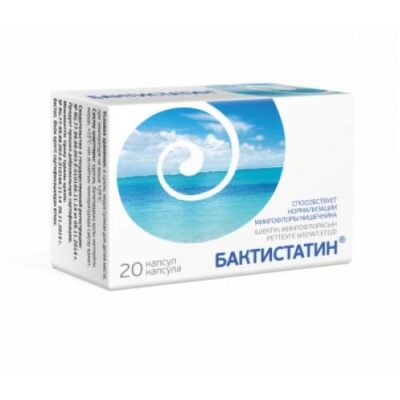
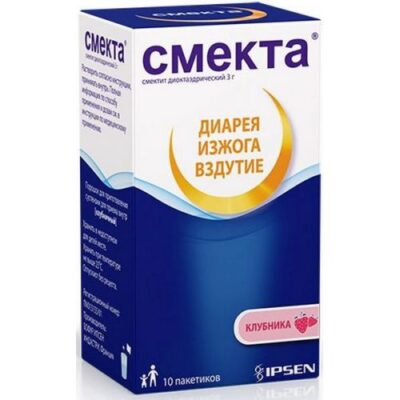
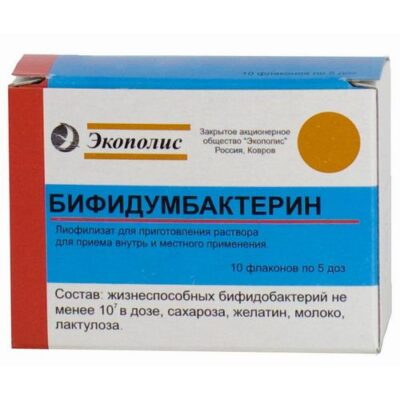
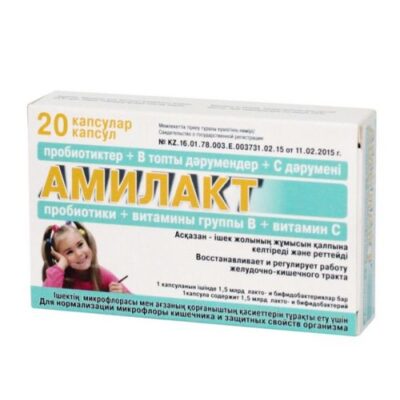
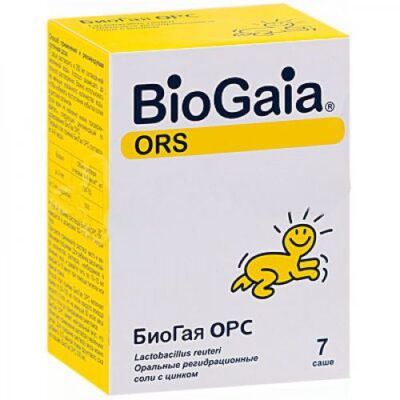
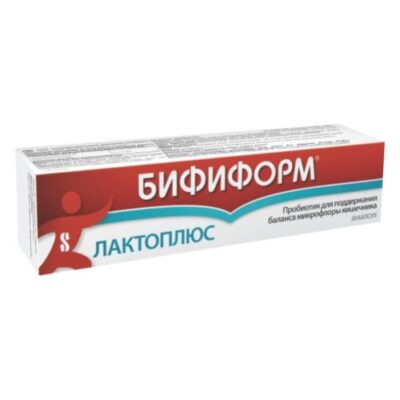
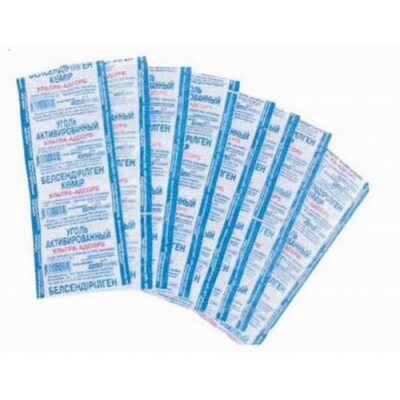
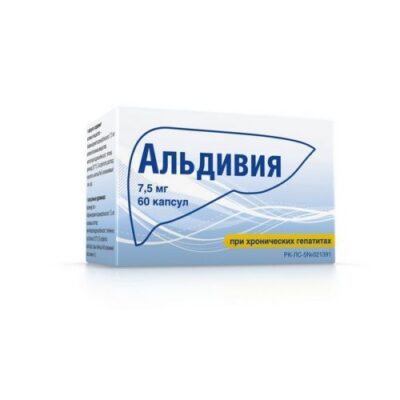
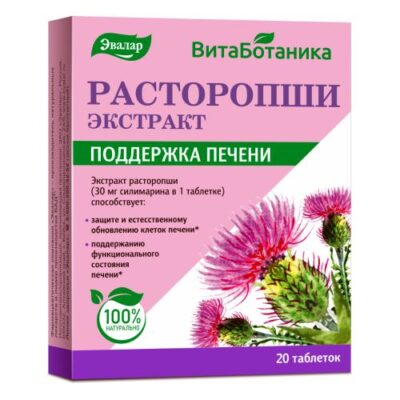






Reviews
There are no reviews yet.